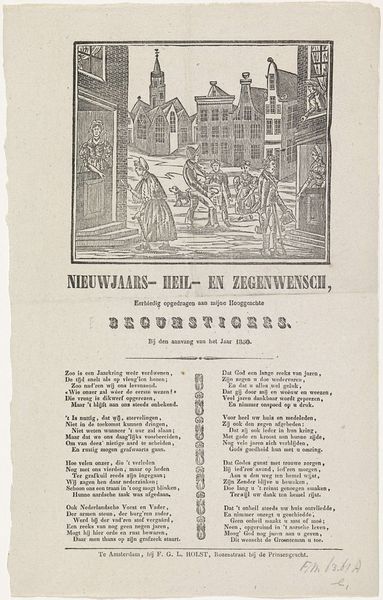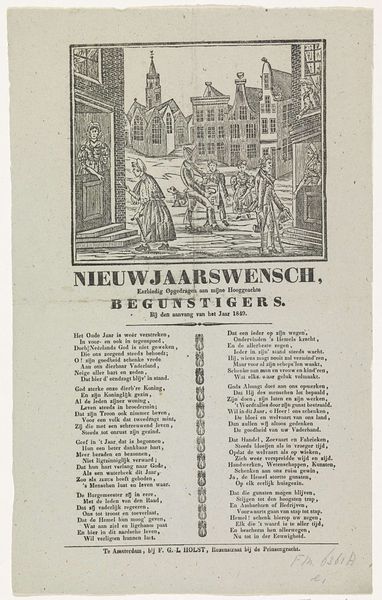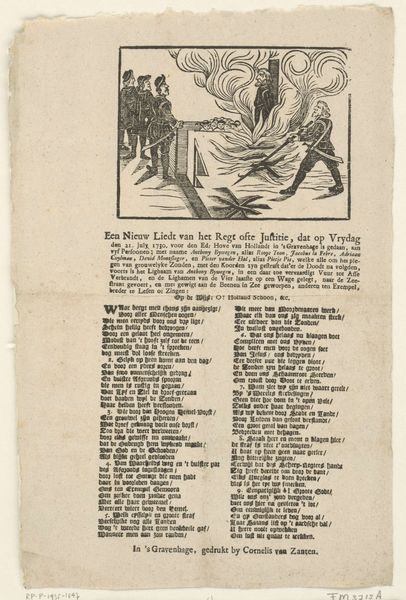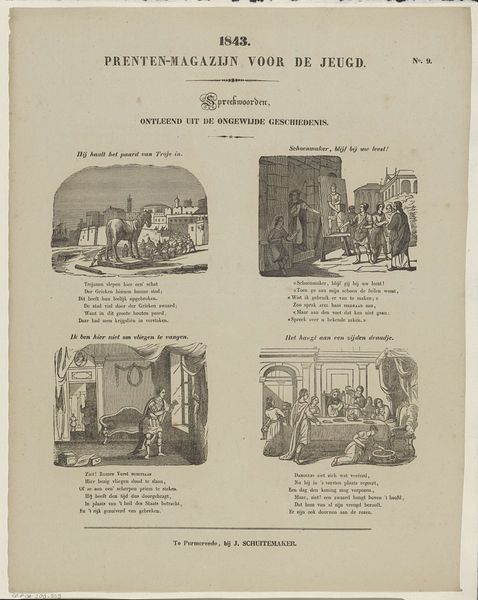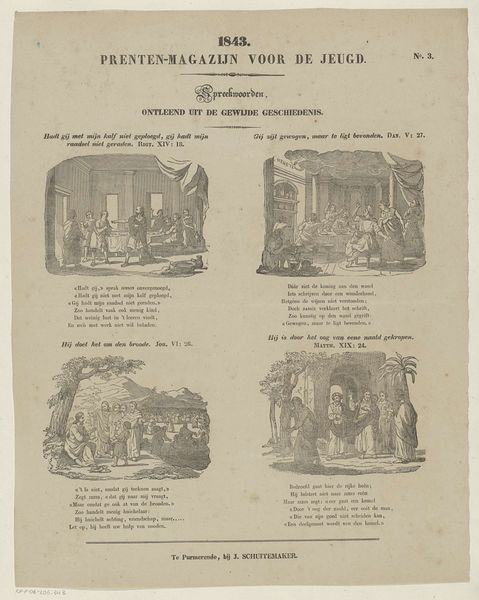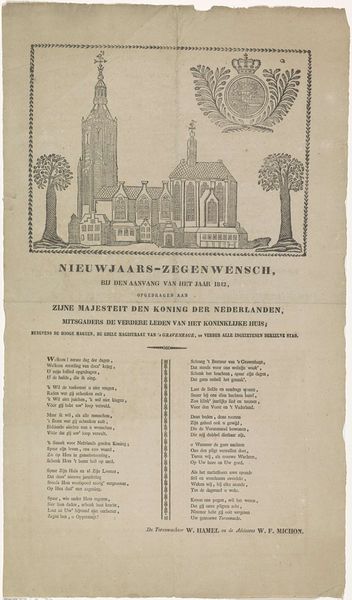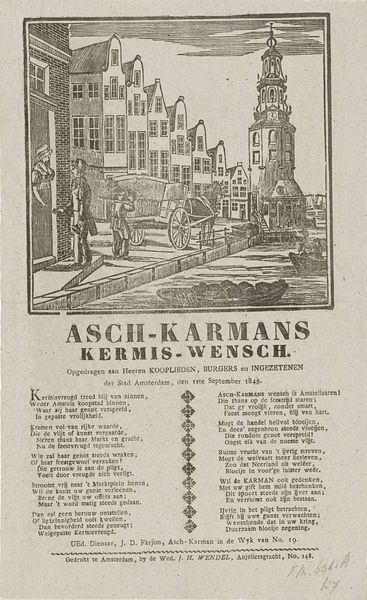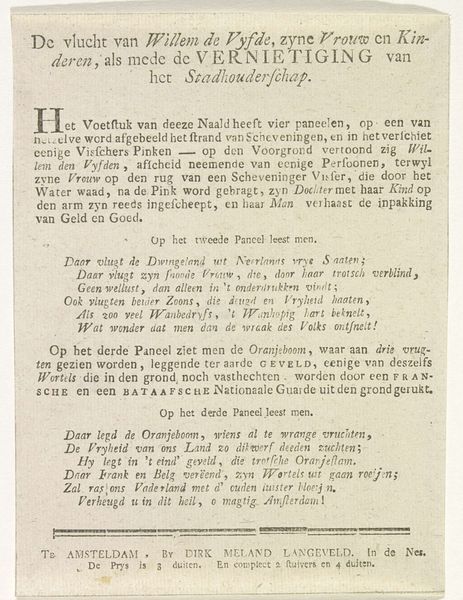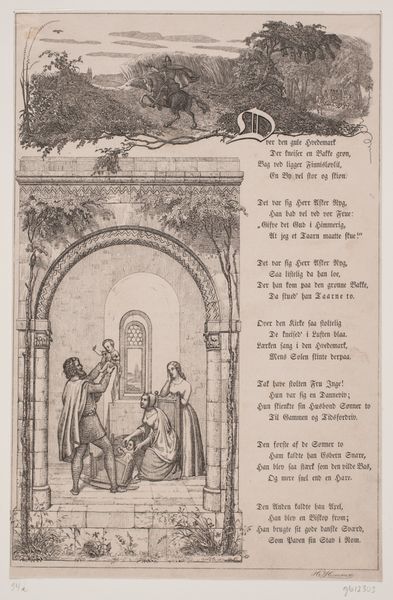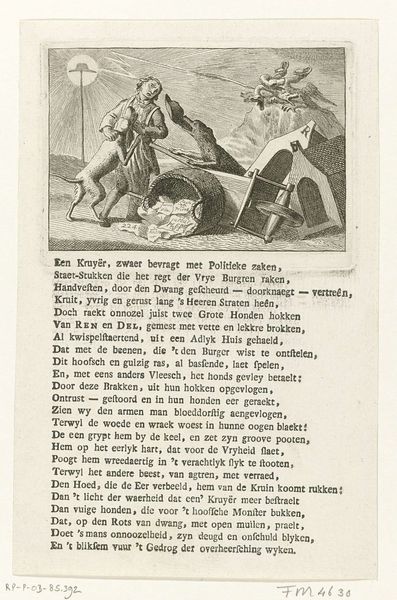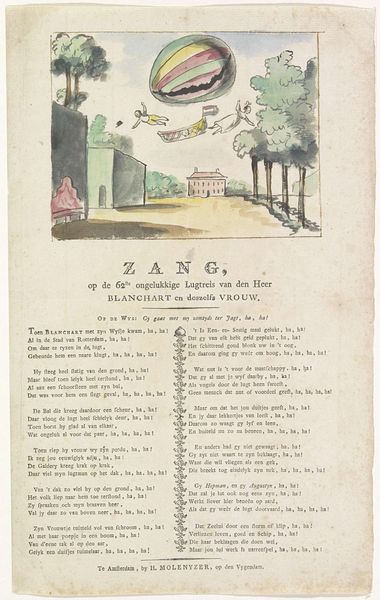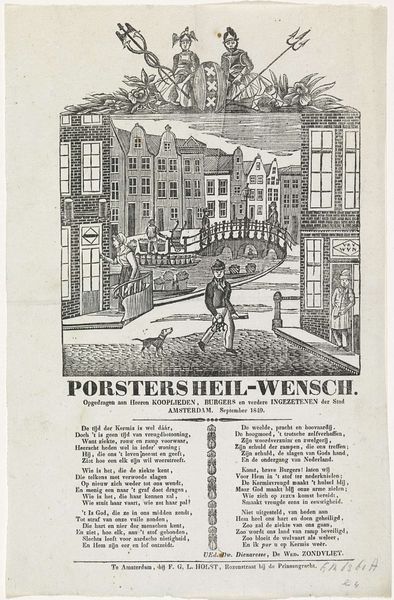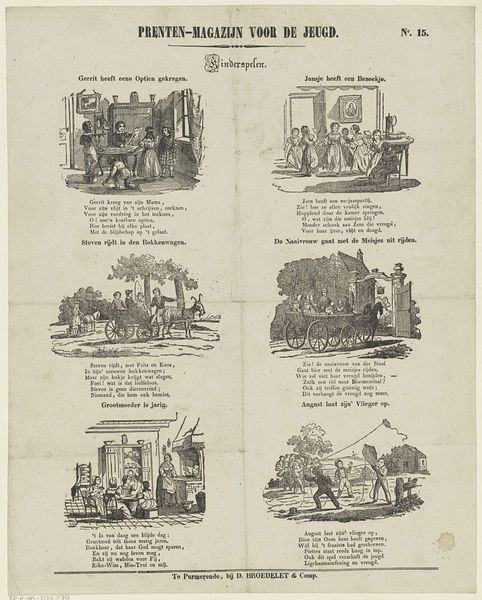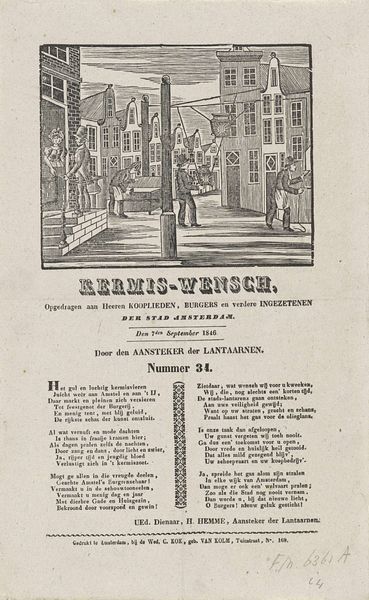
Nieuwjaarswens van de Amsterdamse nachtwacht voor het jaar 1845 1844 - 1845
0:00
0:00
print, engraving
#
narrative-art
#
dutch-golden-age
# print
#
old engraving style
#
landscape
#
form
#
line
#
cityscape
#
genre-painting
#
engraving
#
miniature
#
realism
Dimensions: height 342 mm, width 214 mm
Copyright: Rijks Museum: Open Domain
Curator: I'd like to draw our attention to a fascinating print held at the Rijksmuseum, titled "Nieuwjaarswens van de Amsterdamse nachtwacht voor het jaar 1845," dating from around 1844-1845. Editor: It strikes me as charmingly naive. The perspective is a bit off, but there's a lovely stillness in the landscape. The figures and crisp lines give it a unique old-world feel. Curator: Indeed. It was created to commemorate the New Year, commissioned by the Amsterdam night watch for the merchants, burghers, and residents of the city. This piece served a political and civic purpose. It’s interesting to see the guard playing such a public role through imagery and text. Editor: The engraving itself is fascinating. Considering the precision required, it tells us much about printmaking techniques of the time, not to mention the labour involved in its production and distribution. I’m particularly interested in how the act of producing something like this connected the guard with other groups. Curator: Absolutely. Consider the symbolic weight of a night watch offering new year wishes; they act as protectors offering goodwill. Also, the choice of the cityscape, so idyllic, reinforced Amsterdam’s identity. Editor: Yes, it’s not just a nice view, but a curated representation of prosperity and order. We tend to think of landscapes in the 19th century, especially in the Netherlands, as being oil on canvas, so printmaking is a democratizing shift that moves it more fully into the domain of practical usage for everyday interactions in the city. Curator: The miniature verses of the poem below are fascinating as well. A beautiful marriage of image and the written word—the essence of the public's access to the art world. Editor: So, in a seemingly simple piece of functional civic art, we see intertwined threads of labour, governance, social roles, and visual culture converging on a single piece of paper. Curator: Precisely, reminding us how much a piece can reveal about the socio-political underpinnings of its time. Editor: Indeed. An interesting and thought-provoking example of everyday artistry that is hiding in plain sight.
Comments
No comments
Be the first to comment and join the conversation on the ultimate creative platform.
